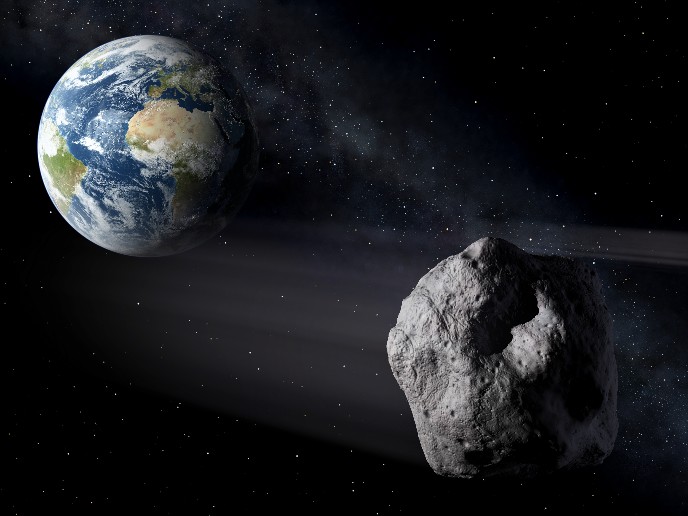Can we stop an asteroid from crashing into Europe?
An asteroid 57 million km away will hit Earth within 6 months. It destroys a huge region of Europe. This doomsday scenario is fictitious, but would we be able to prevent it from happening if it were true? To answer this question, experts at NASA and the European Space Agency (ESA) carried out a week-long simulation of an asteroid impact during the 7th IAA Planetary Defense Conference in Vienna. On a daily basis, the participants were briefed about the asteroid’s size, trajectory and potential for impact. Then they had to provide feedback on how to stop the asteroid given the latest information and developments. A dedicated asteroid impact exercise website(opens in new window) provides complete details of all the days and final outcomes.
What if?
“Each time we participate in an exercise of this nature, we learn more about who the key players are in a disaster event, and who needs to know what information, and when,” commented NASA’s Planetary Defense Officer Lindley Johnson in a press release(opens in new window). “These exercises ultimately help the planetary defense community communicate with each other and with our governments to ensure we are all coordinated should a potential impact threat be identified in the future.” “Hypothetical asteroid impact exercises provide opportunities for us to think about how we would respond in the event that a sizeable asteroid is found to have a significant chance of impacting our planet,” explained Dr Paul Chodas, director of the Jet Propulsion Laboratory’s Center for Near Earth Object Studies. Today’s technologies couldn’t prevent the asteroid from hitting Earth given the 6-month time period. As a result, the asteroid crashed into eastern Europe. There was a 99 % chance the impact would be near the borders of the Czech Republic, Germany and Austria. The worst-case scenario was that the serious damage region would be about 300 km across. Based on risk and damage assessment analyses and disaster response discussions, all that could be done was to safely evacuate the affected areas before the collision.
Are we on a collision course with space rocks?
The hypothetical asteroid exercise shows we’re unprepared for such a crisis. So what? Is there any chance we might suffer the same fate as the dinosaurs some 66 million years ago? Over the years, some near-Earth objects (NEOs) like comets and asteroids have passed Earth or entered the atmosphere. NASA and ESA are building telescopes to track NEOs. Another solution is slamming into an oncoming asteroid. NASA has built technology called the Double Asteroid Redirection Test (DART) that will hit the asteroid Dimorphos in 2022 and change its orbit. Dimorphos isn’t a threat, but the goal is to see if knocking this and other asteroids off their trajectories with enough preparation time actually works. “DART will be the first test for planetary defense, and the data returned after it impacts Dimorphos will help scientists better understand one way we might mitigate a potentially hazardous NEO discovered in the future,” stated Andrea Riley, programme executive for DART, in the press release. “While the asteroid DART impacts poses no threat to Earth, it is in a perfect location for us to perform this test of the technology before it may actually be needed.”



